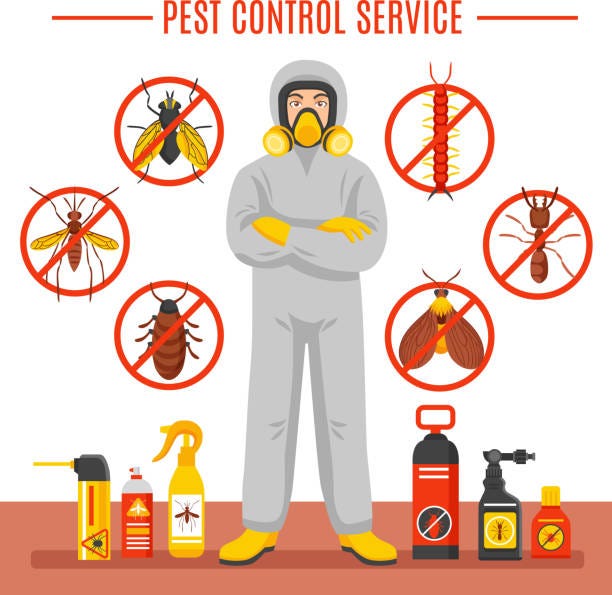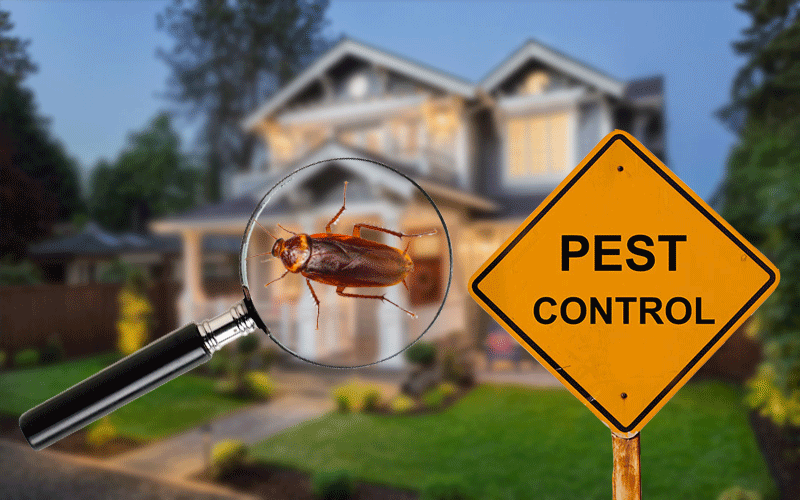Experienced A1 Exterminators Charlotte NC - Rapid and Reliable Solutions
Experienced A1 Exterminators Charlotte NC - Rapid and Reliable Solutions
Blog Article
Bed Insect Therapy Breakdown: Comparing Chemical Vs. Non-Chemical Solutions
In the world of bug control, especially when handling the relentless issue of bed pests, the choice in between chemical and non-chemical treatment remedies can be a pivotal one. Both strategies provide distinctive benefits and downsides, influencing aspects such as efficiency, security considerations, and overall expense. By analyzing the nuanced information of each approach, a clearer understanding of which course to pursue in attending to a bed bug invasion can be acquired.
Effectiveness of Chemical Therapies
Chemical therapies for bed pest problems have been widely recognized for their powerful and quick efficacy in removing these parasites. When thinking about the effectiveness of chemical treatments, it is essential to understand that they can offer a thorough and quick option to a bed insect issue. Specialist pest control men frequently count on pesticides to target bed pests at numerous phases of their life process, including grownups, eggs, and fairies. These chemicals commonly function by disrupting the bed bugs' nerve system, causing paralysis and eventual death.
Moreover, chemical therapies have the benefit of offering residual results, suggesting that they can remain to get rid of bed pests even after the first application. This residual activity is especially useful in combating any type of potential re-infestations. In addition, the fast action of chemical therapies can bring alleviation to individuals encountering serious bed bug problems, enabling them to restore control of their home quickly.
Security Interest In Chemical Solutions
One important element that calls for mindful factor to consider when making use of chemical remedies for bed pest therapy is making certain the safety and security of owners and the setting. Direct exposure to particular chemicals made use of in bed pest treatments can lead to respiratory concerns, skin irritability, or various other negative reactions, particularly in individuals with pre-existing conditions or level of sensitivities.
In addition, the ecological impact of chemical solutions is an additional substantial consideration. Some chemicals utilized in bed insect treatments may be unsafe to advantageous bugs, wildlife, and communities if they seep right into the dirt or water systems. It is necessary to make use of chemical treatments sensibly, adhering to safety guidelines, and thinking about much less poisonous options to reduce these risks and guarantee the reliable and risk-free management of bed pest infestations.
Benefits of Non-Chemical Techniques
Thinking about the potential safety and security issues and environmental influence related to chemical remedies for bed insect therapy, checking out non-chemical techniques presents an encouraging option with numerous unique advantages. Non-chemical approaches offer a much safer option for families, particularly those with individuals, youngsters, or family pets sensitive to extreme chemicals. These approaches get rid of the threats of exposure to harmful materials, reducing the capacity for damaging wellness effects. Moreover, non-chemical therapies are eco-friendly, as they do not add to air or water air pollution, making them a lasting choice for bug control.
In addition, non-chemical remedies can be reliable in targeting bed insects, consisting of hard-to-reach locations where chemical therapies might not pass through. Techniques such as warm treatment, vacuuming, steam cleaning, and mattress encasements provide extensive elimination without making use of unsafe chemicals. Furthermore, non-chemical techniques can be much less disruptive, needing minimal prep work and permitting quicker reentry right into treated areas. In general, going with non-chemical bed pest therapy techniques not only prioritizes safety and environmental management important source yet likewise guarantees efficient and comprehensive parasite control.
Limitations of Non-Chemical Treatments

In addition, non-chemical treatments typically call for numerous applications to achieve successful eradication. This can be time-consuming and may not always guarantee complete removal of all bed pests and their eggs, particularly in surprise or hard-to-reach areas.
Furthermore, the success of non-chemical treatments heavily depends on proper implementation and thoroughness, which can be challenging for people without expert competence. Insufficient application of non-chemical techniques might cause insufficient removal, resulting in persistent infestations and the demand for added treatments.
For that reason, while non-chemical treatments have their benefits, it is important to recognize these limitations and consider them when determining the most reliable technique for taking care of bed pest problems.
Price Contrast: Chemical Vs. Non-Chemical Options
Offered the limitations related to non-chemical therapies, an essential facet to review in the context of bed pest administration is the expense contrast between chemical and non-chemical options. Chemical treatments generally entail the application of insecticides by experts, which can range from $250 to $900 per space, depending on the intensity of the invasion and the size of the location to be dealt with. On the other hand, non-chemical therapies like heat therapy or vapor can be a lot more expensive, with costs varying from $1,000 to $6,000 for an entire home. While the initial price of chemical therapies may appear reduced, several treatments might be needed to fully eradicate the problem, possibly enhancing the total cost. On the other hand, non-chemical alternatives might supply a more lasting and environment-friendly service, although they can be cost-prohibitive for some people. Eventually, when considering the price of bed bug therapy options, it is essential to evaluate the ahead of time expenses versus the effectiveness and lasting sustainability of the picked method.
Final Thought

Taking into consideration the possible security issues and ecological impact linked with chemical services for bed bug therapy, exploring non-chemical approaches offers a promising alternative with numerous unique advantages.Offered the limitations connected with non-chemical therapies, an essential aspect to examine in the context of bed bug monitoring is the expense contrast between chemical and non-chemical options. In contrast, non-chemical treatments like warmth treatment or heavy steam can good pest control companies be extra costly, with prices varying from $1,000 to $6,000 for an entire home. While the preliminary expense of chemical therapies may seem lower, multiple treatments might be required to completely eradicate the infestation, potentially raising the overall price.In conclusion, when contrasting chemical and non-chemical bed bug treatment alternatives, it is vital to take into consideration efficiency, safety and security, benefits, restrictions, and expense.
Report this page